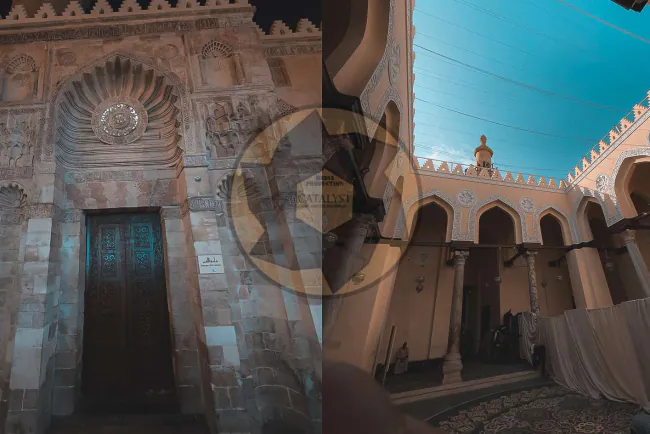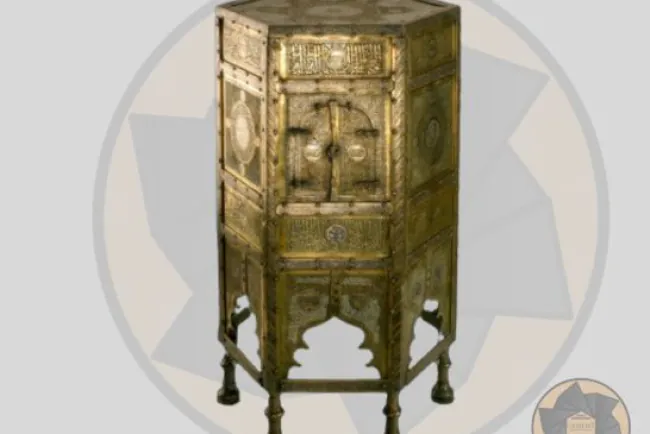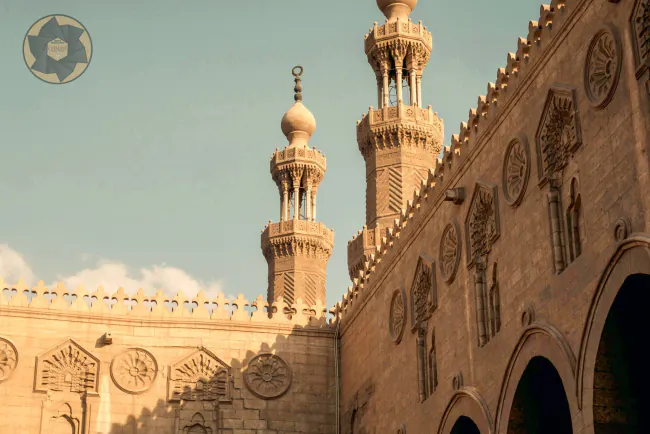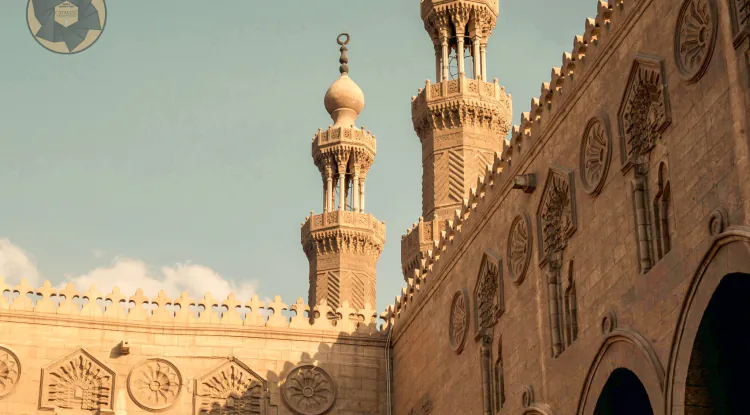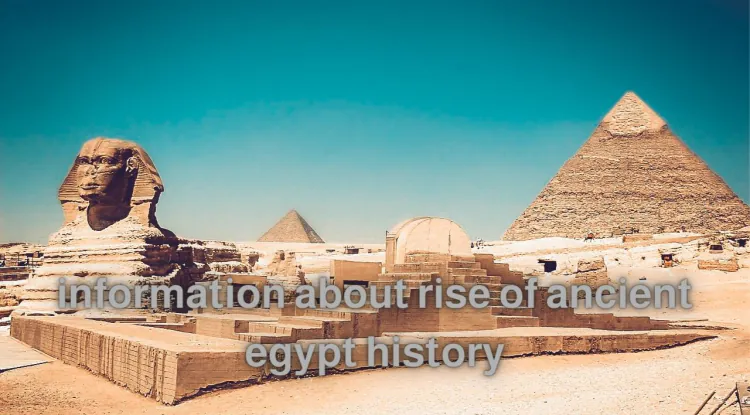The origins of the hollow mihrab in Islamic architecture and its development
The mihrab is considered one of the most important basic features of the mosque in various styles and sizes. The Muslim designer gave priority attention to this element, whether in design or decoration and embellishment, and the use of building materials that give a sense of luxury, such as colored marble and ancient wood.
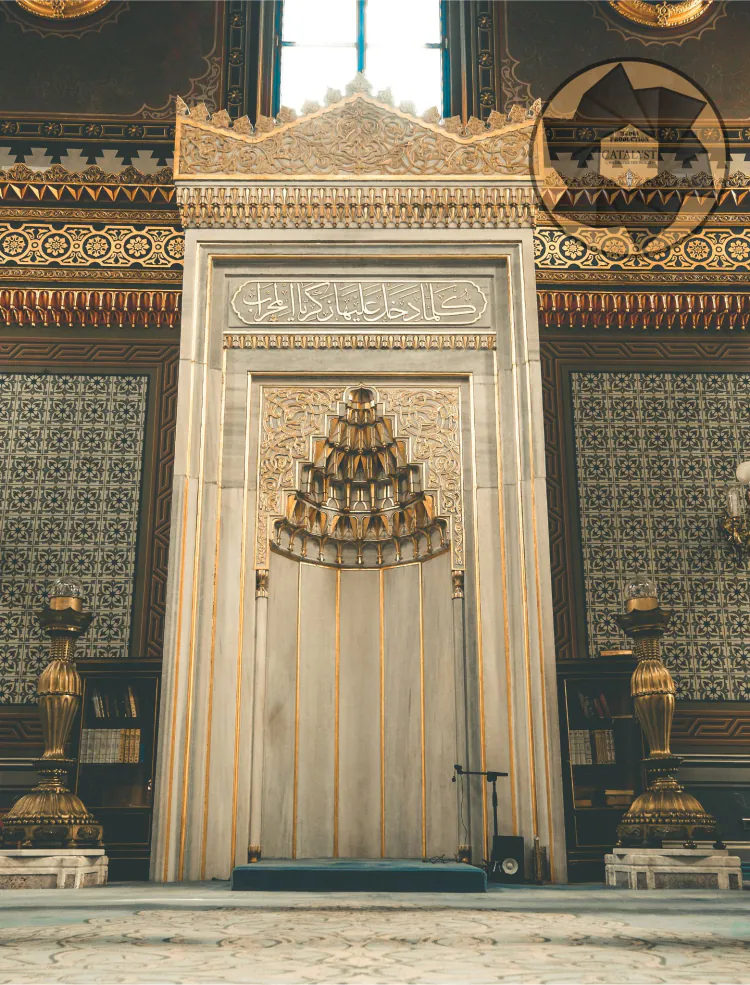
The hollow mihrab:
The most important thing that happened to the prayer riwaq in the first mosque was the hollow mihrab designated for the imam to stand in prayer, which determined the direction of the Kaaba in the middle of the qibla wall. It is known that the Prophet’s Mosque did not have a mihrab, as it was sufficient to plant an arrow or spear in the middle of the qibla wall to determine the direction of the Kaaba.
It is known that the mihrab appeared for the first time in the Prophet’s Mosque when it was rebuilt in the year (87 AH/706 AD) by order of Al-Walid bin Abdul Malik, and under the supervision of Omar bin Abdul Aziz, who was the governor of the city at that time. Since Al-Walid had sought help in the construction of the Romans from the Levant, who worked on the courtyard, and the Copts, from the people of Egypt, who worked on the House of Prayer, a controversy arose about the origin of the mihrab.
Some said that the Copts were the first to build it, and it became agreed upon by many European researchers that the mosque’s mihrab was transferred either from the apse of the temple or the choir in the church or in some Jewish synagogues.
The truth is that the big difference between the apse of a church and the mihrab of a mosque, and if there is a similarity between them in that each of them is more like a semi-circle, then what is important in matters of architecture is not just the form, but more importantly, is the function. The apse of the temple in the church occupies a large area that may reach a third of the size of the church, because it contains the altar and the rituals performed by the clergy take place, and the choir of singers may sit in it, while the small apse of the mihrab appeared as a result of the imam standing in the middle of the first row.
This is so that he alone does not occupy the place of the row in which dozens of worshipers could stand, and hence the difference in function, and therefore in structure, between the apse of the structure and the sanctuary, as the former constitutes the main part of the church. While the second is nothing more than a small corner or a niche in the wall, the aim of erecting it, if not carving it in the wall of the main court in the qibla riwaq , is to determine the direction of the qibla before it is in order for the imam to stop when he leads the people in prayer. This is what a number of leading modern scholars from the French school have turned to.
It is known that before the appearance of the hollow mihrab, the mosque knew a type of flat mihrab that appeared in the qibla wall, similar to an imaginary door in that wall, which continued in the form of the plaster mihrab that appeared in the Abbasid architecture of Samarra, and a number of examples of it remain for us in the Ahmed Ibn Tulun Mosque in Cairo. Some of them are from the Fatimid era and others from the Mamluk era. Thus, it was not strange that some texts mentioned the presence of the mihrab in the wall of the Quba Mosque since the days of the Holy Prophet, and that the Prophet used to use a wooden board standing on wooden legs called an anza to determine the direction of the Qibla, as if it were a mihrab. Or that the Amr Mosque in Egypt introduced the mihrab around the middle of the first century AH during the days of the ruler of Egypt, Maslama ibn Mukhlid, and the same was true for the Mosque of Kairouan. Most likely, all of these early mihrab were of the flat type.
The flat mihrab developed into a hollow apse that accommodates the imam alone when people advance in prayer. Examples of this small mihrab have come down to us from the Umayyad era, carved in engraved marble, and they were reused in some of the first Abbasid mosques in Iraq. What is important is that the hollow mihrab, which Omar bin Abdul Aziz created during the reign of Al-Walid bin Abdul Malik in the Prophet’s Mosque, received great care from artists, architects and decorators, until it became like the Christian altar, the holiest place in the Islamic mosque. The roundness of the apse of the mihrab was slightly greater than the semicircle in many mosques,
In the Qorbata Grand Mosque, its horizontal section increased to the shape of a horseshoe, and it also increased in size until it became like a room or a throne room, as will appear in mosques of the Persian-Seljuk or Turkish-Ottoman style.
The niches were provided with thin columns on both sides of the niche, and the top of the niche in many mosques was decorated in the shape of a conch, which symbolizes fertility and giving represented by the pearl, as Burkart sees it, or decorated with crystal-shaped muqarnas, Since the arch of the mihrab is usually decorated with Qur’anic verses urging the rebuilding of the houses of God,
Especially that verse that says: “Whenever Zechariah entered the sanctuary over her, he found with her provision.” We believe that the common recording of that verse at the top of the arches of the sanctuaries is what led European scholars to affirm the saying that the origin of the sanctuary goes back to the structure or choir of the church.
Before the later ones began to understand that the mihrab arose in the form of a niche, a purely Islamic origin, following the nature of the imam standing alone in the space of an entire row, which became occupied by dozens of worshipers and perhaps hundreds, When the imam took the mihrab, and so Grabar was right to say: “The mihrab became, in a short time, a required form for symbolic or ritual reasons.” As for the rest of the mosque’s elements, he left their construction to the people’s choice.
What's Your Reaction?







